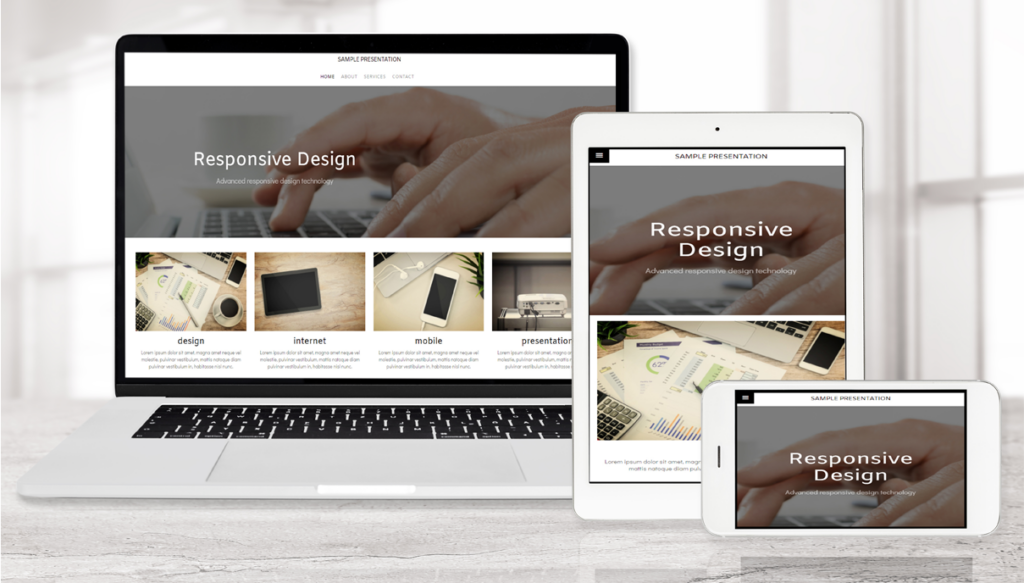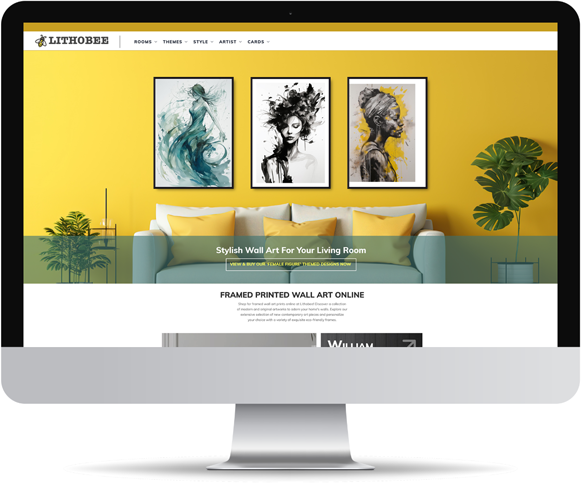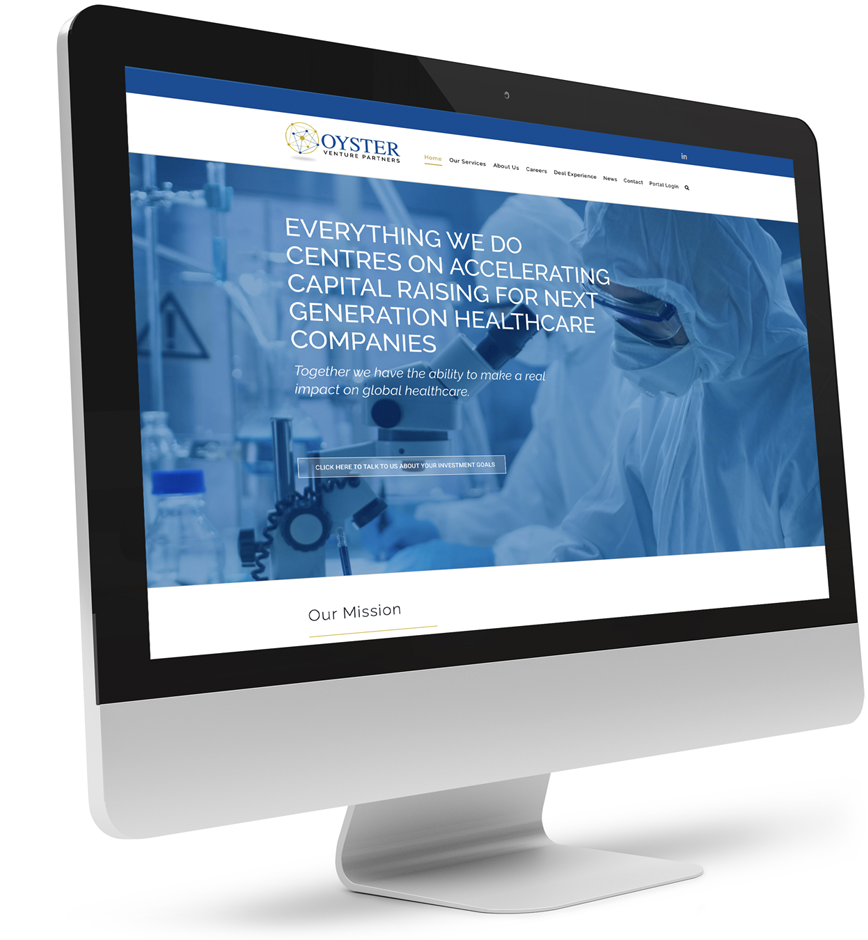Website Design
Making the most of your online presence
From Brochure Websites to Online Stores
What are the principles of good website design?
Designing an effective website for your users and business begins with understanding its core purpose. It’s crucial to identify what your users are looking to achieve when they visit your site and align this with your own goals, whether that’s increasing brand awareness, driving sales, or disseminating information. A clearly defined purpose helps guide all other design and content decisions, ensuring that your site remains focused and user-centric.
Below are a number key principles that outline key considerations when creating your business website, be it to present a range of services or sell the latest products, ultimately, your goal is to create a memorable experience that keeps customers coming back for more.

- Understand your value proposition
- Focus on User Experience to deliver conversions
- Effective Navigation
- Responsive Design for every screen size
- Branding & Tone of voice
- Information Hierarchy & Quality Content creation
- Visual and functional elements play a significant role in user experience.
- Consumer Insights – SEO & Analytics
Understand your value proposition
A critical aspect of effective web design is presenting a clear value proposition. Your unique selling proposition (USP) should be evident to users as soon as they land on your homepage. You may already be running marketing campaigns to promote products or services within separate marketing environments, maintain continuity by reflecting concepts and graphics on the home page of your website or within banners on key relating product or services pages. A value proposition should clearly explain how your service or product fills a specific need, presenting its added values and effectively communicating the reason why it’s better than similar products on the market. This clarity helps users quickly understand what you do, how you can help them, and what their next steps should be. A strong, clear USP not only captures users’ attention but also sets the stage for a compelling user experience.
Responsive Design for every screen size
In today’s digital landscape, multi-device optimization is non-negotiable. Designing/wire-framing, with a mobile-first approach ensures that your website performs well across all devices, particularly smartphones and tablets. Responsiveness in design means your site looks great and functions seamlessly, regardless of the screen size or platform, which is critical for reaching and retaining a broader audience.
Information Hierarchy & Quality Content Creation
Understanding industry specifics is crucial for tailoring a website’s content, design, and functionality to meet industry standards and expectations. Informing and educating visitors involves providing valuable information about the business, industry insights, blog articles, and educational resources. Generating leads can be achieved through contact forms, gated content such as white papers or e-books, and clear calls-to-action.
For direct sales, the website needs to facilitate online transactions through a secure and seamless shopping experience. Building brand credibility can be done by establishing a professional design, showcasing testimonials, and presenting case studies. Providing customer support through resources like FAQs, live chat, support tickets, and contact forms ensures visitors can easily get the help they need. Ensure that your content is tailored to meet the needs and interests of your audience. Organize your content using pillar pages and topic clusters to build authority and improve search engine ranking. Diverse content formats—such as guides, blog posts, video tutorials, and product insights — cater to different user preferences, keeping the experience engaging and informative.


The Importance of UX Design
User experience (UX) is how a user interacts with and experiences your website, It includes a person’s perceptions of ease of use and efficiency in terms of how quickly key information can be accessed. Maximising the user experience is important for conversion delivery. High-quality user experience (UX) and user interface (UI) is essential for retaining visitors and guiding them towards your desired actions. Focus on creating an intuitive and aesthetically pleasing design that prioritizes ease of navigation. A seamless user journey, from entry to conversion, minimizes friction points and enhances overall satisfaction. Combining functionality with visual appeal ensures that users not only find your website useful but also enjoy interacting with it. Effective Navigation The primary purpose of a business website can vary, but it generally aims to inform and educate visitors about the business, generate leads and conversions, facilitate direct sales, build brand credibility, and provide customer support. Effective navigation points visitors to the information they need within a minimum number of clicks. Intuitive menus, drop-down menus, breadcrumb trails, and clear categorization contribute to easy and effective navigation.
Visual and functional elements play a significant role in user experience. Typography should be readable and aesthetically pleasing, with consistent font sizes and styles. High-resolution images relevant to the content should be used and optimized for fast loading. Website sliders can highlight key content or promotions, but they should not hinder usability. Speed optimization techniques, such as image compression, caching, and minimizing HTTP requests, ensure fast load times. Finally, the footer should include essential information like contact details, social media links, privacy policy, terms of service, and secondary navigation. By meticulously addressing each of these components, businesses can build a website that is visually appealing, user-friendly, and strategically designed to achieve their goals and resonate with their target audience.
Consumer Insights – SEO & Analytics
Website optimization is crucial for both user experience and search engine performance. Fast page load speeds are essential to prevent users from abandoning your site out of frustration. Implementing SEO best practices improves your site’s visibility in search engine results, driving organic traffic. This includes optimizing for keywords, creating high-quality backlinks, and ensuring that your site’s structure is search-engine friendly.
Defining and optimizing required conversions is another key aspect. This involves identifying key conversion actions like product purchases, contact form submissions, email sign-ups, or social media follows. Optimizing these conversions can be done through A/B testing, heat maps, and user feedback. Implementing analytics tools such as Google Analytics helps monitor user behavior and conversion performance, providing insights for continuous improvement.
To summarise, start by defining your audience and purpose through thorough research and goal-setting. Craft a compelling value proposition that is immediately visible to users. Plan a robust content strategy that includes diverse formats and organized structures. Focus on delivering a high-quality UX/UI design that is both functional and visually appealing. Optimize your website for performance, responsiveness, and security. By following these detailed steps, you can create a website that not only meets the needs of your users but also supports and enhances your business objectives.

